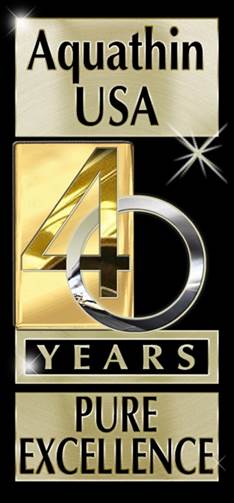Pharmaceutical wastes taint US. waters
The quick read article below is shocking conclusive findings for the fact that (ref: previous
"Aquathin OP-ED Commentary"
The quick read articlebelow is shocking conclusve findings for the fact that (ref: previous articles emailed to you) these specific issues are not confined but pandemic. What the article DOES NOT TELL YOU is the exact seriousness of this cocktail! You learned at Aquathin University from the report on Drinking Water and Human Health by the A.M.A., the chemical cocktail could be 1000 times worse than each individual contaminate. AND...think about this. You already know that doctors and your neighborhood pharmacy advise you that certain drugs cannot be taken at the same time. If you follow their professional advice and swallow with tap water containing a mixture of drugs, what have you done!?!?!?!
Hundreds of years ago people living in cities threw their waste (garbage & human) out the window into the street gutters for the rain to wash away, thus contaminating the streams flowing to the residents downstream. Tired of getting sick and dying, the downstream residents trapsed off into the woods in search of an uncontaminated source of water to carry home in vessels...hence the beginning of bottled water. Today everyone lives downstream from somebody else. The quick read article tells us that 80% of water sources are contaminated water...and you can assume that since we are defining this now, the percentage will increase, and the concentrations will increase by the time tactical actions are implemented to reduce the introduction of contaminates and clean up the problem. CAN YOU SAY I LOVE MY AQUATHIN !
New study says pharmaceutical wastes taint US waters
WASHINGTON — The first nationwide study of pharmaceutical pollution of rivers and streams shows that most waterways contain some contamination from antibiotics, steroids, synthetic hormones and other commonly used drugs.
Of the 139 streams analyzed by the US Geological Survey (USGS) in 30 states, about 80 percent contained trace amounts of contaminants that are routinely discharged into the water in human and livestock waste and chemical plant refuse, the Washington Post reported.
Seven or more chemical compounds were found in half the streams sampled and 10 or more compounds were found in a third of the streams; a single water sample contained as many as 38 chemicals, the article said.
The USGS study, which will be published in today's issue of Environmental Science and Technology, stresses that in many cases the measured concentration of contaminants such as painkillers, insect repellent, caffeine and fire retardants was less than 1 part per billion and rarely exceeded federal standards for drinking water. But many of the chemical compounds detected are not covered by drinking-water standards or government health advisories, and little is known about how the interaction of those chemicals can affect humans, animals and the environment, according to the Post. "Protecting the integrity of our water resources is one of the mostessential environmental issues of the 21st Century," the report states, according to the article. "Little is known about the potential interactive effects" from complex mixtures of waste contaminants in the environment, USGS said.
The newspaper said water quality mirrors societal behavior and medical practices. Antibiotics and other prescription and nonprescription drugs and personal care products used widely by Americans inevitably turn up in wastewater; manufacturers and chemical plants legally dump thousands of tons of compounds into streams and rivers, and the waste of livestock treated with veterinary pharmaceuticals flows into streams. "We're not talking about rampant dumping," a USGS Survey official said in the article. "We're looking at the effect of normal existing usage for these different chemicals."
The study, conducted in 1999 and 2000, surveyed the occurrence of 95 pharmaceuticals, hormones and other organic waste in streams across the country.
The sampling technique focused on streams most susceptible to contamination, downstream from large urban areas like New York, Boston, Chicago and Denver, or industrial plants or livestock yards. The study was not designed to compare the water quality of different streams, OSGS said, but to create a baseline for future study by scientists of the persistence and migration patterns of the compounds and their potential impact on humans and the environment the Post reported.
FOR THE BEST TASTE IN LIFE
Think Aquathin...AquathinK!!
Edited from Tech Bank 3/13/02


